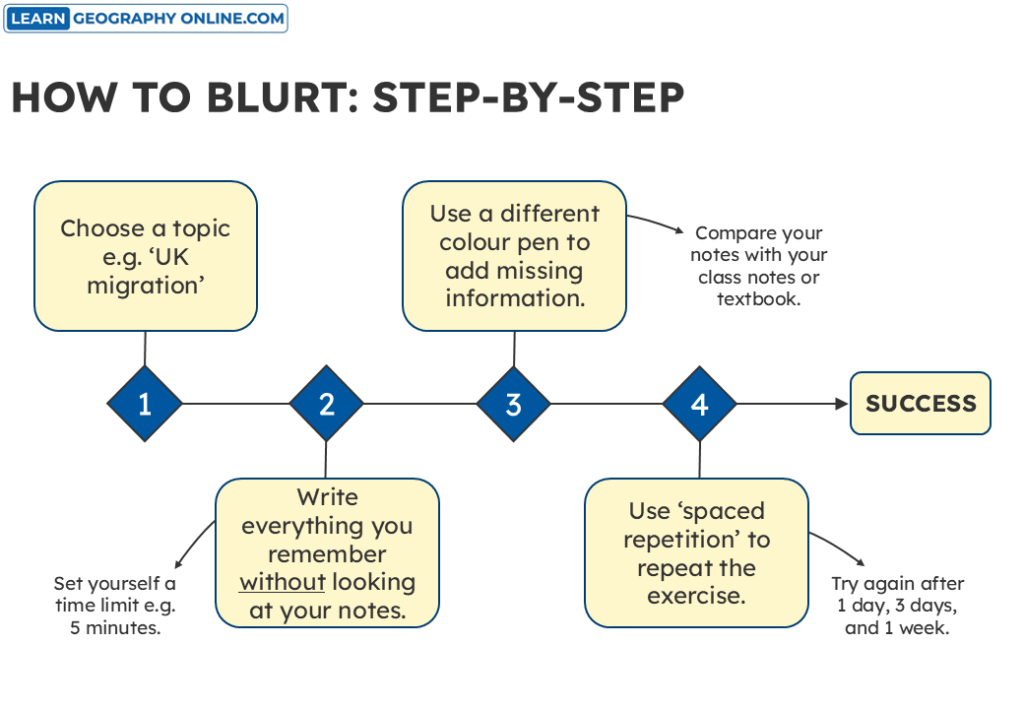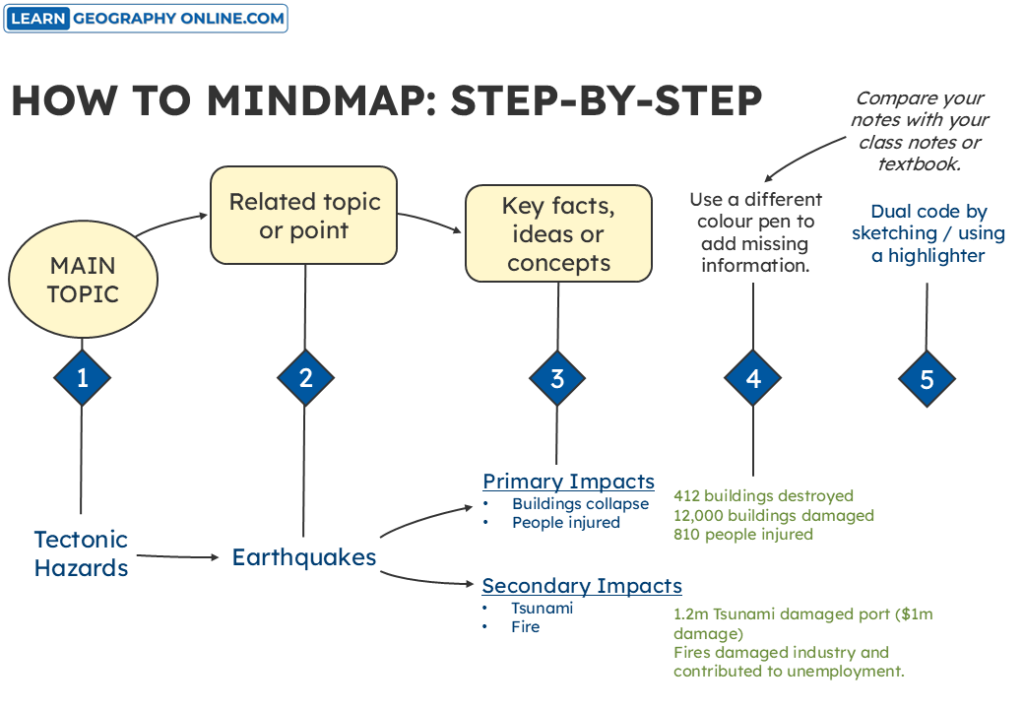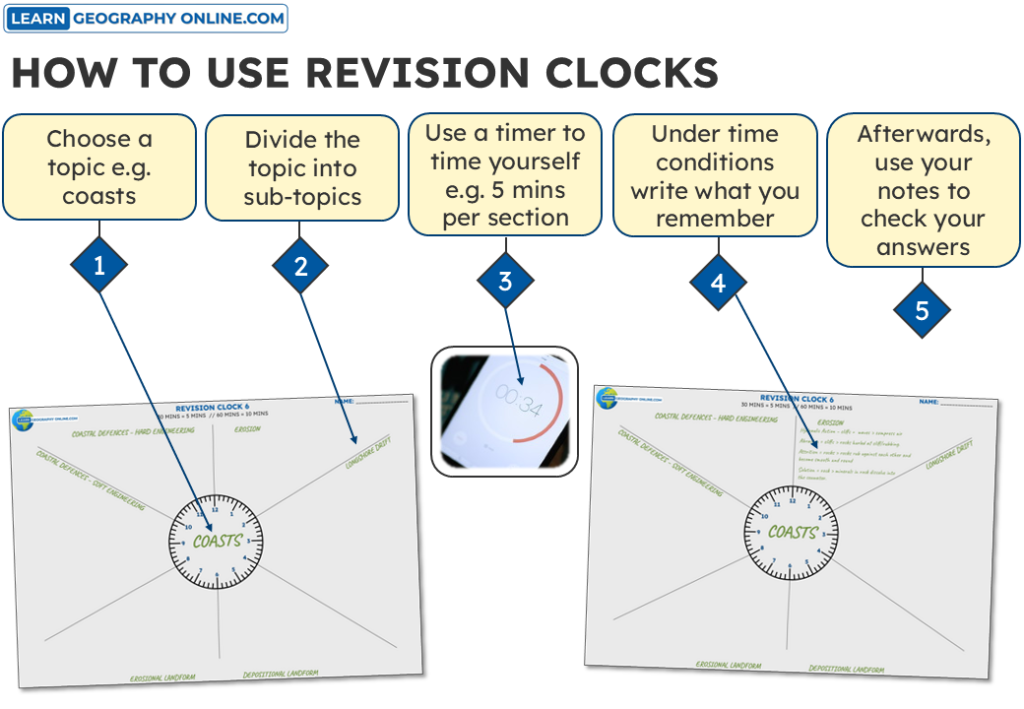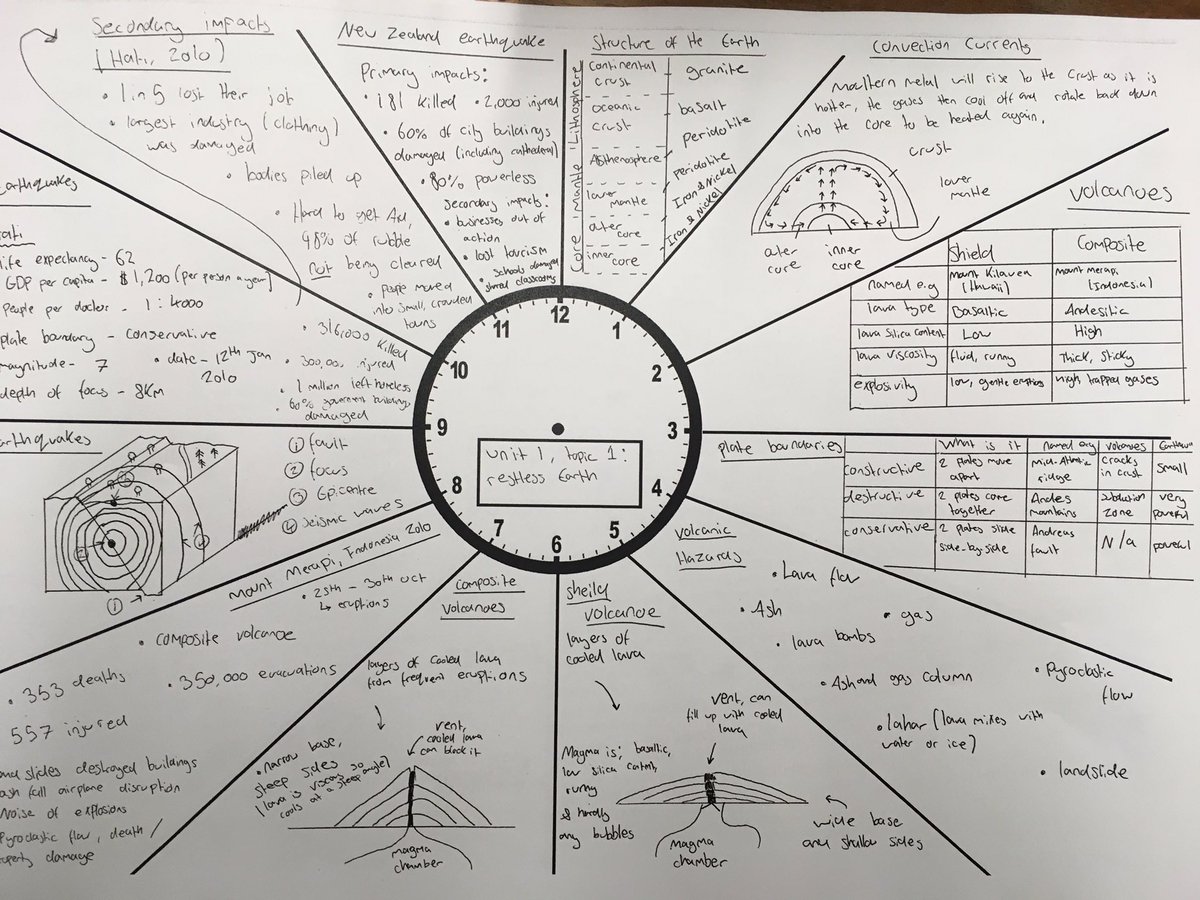How to Revise Effectively
Learn powerful techniques that top students use to revise smarter – not longer.
1) Why Most Revision Fails
Let’s be honest — most students think they’re revising, but they’re not doing it in a way that actually sticks. If you’ve ever spent hours rereading your notes, highlighting everything, or making beautiful revision cards… only to forget half of it in the exam? You’re not alone.
Here’s the problem: most revision mistakes fall into the same traps:
The good news? Revision doesn’t have to feel overwhelming. With the right techniques and a solid plan, you can revise less and remember more.
This guide will walk you through exactly how to do that — using proven strategies, simple tools, and methods that actually work (no more guesswork).
2) How to learn effectively – The Big 3
The ‘Big 3’ are the core, evidence-based revision strategies that are ranked top by educational researchers.
Active Recall
Although reading and highlighting feels like good revision, studies suggest it is not that effective. Active recall is when you test yourself on information and check you were correct or add extra information. This helps you to remember better.
Step 1) Choose a topic.
Step 2) Either blurt, mind map or use revision clocks to write what you remember or use pre-prepared flashcards or answer exam questions.
Step 3) Check your writing and add extra information or mark your answers and improve.

Top Tips
🔁 Use Active Recall and Spaced Repetition
Don’t just read your notes — test yourself.
Step 1) Choose a topic.
Step 2) Try writing down everything you remember about the topic without looking.
Step 3) Check what you got right and what you missed.
Step 4) Do this again a few days later. The more often you practise, the better it sticks.
You could use this technique by making mind-maps, writing bullet points, creating posters or answering questions (use exams or points from your specification).
📝 Focus on Exam-Style Questions
Want to get good at exams? You need to practise with real questions. Use past papers, mark schemes and timed answers to learn what examiners are looking for — and how to stay calm under pressure.
⏱️ Revise in Short Bursts (Pomodoro Technique)
Break your revision into focused intervals (e.g., 25 minutes), followed by a short 5-minute break. After four sessions, take a longer break. This method keeps your mind sharp and prevents burnout.
🔀 Mix Topics (Interleaving)
Don’t stick to one subject for too long. Rotate between different topics—say, 25 minutes on physical geography, then 25 on human geography. This approach encourages deeper learning by showing how topics interconnect.
📊 Practice with Quizzes and Mock Exams
Test yourself under real exam conditions. Online quizzes and simulated exam papers not only check your knowledge but also prepare you to manage exam pressure.
👩🏫 Teach Someone Else (Feynman Technique)
Explaining a topic in your own words, whether to a friend, family member, or even to yourself, forces you to understand it fully. If you struggle to explain it, you know where you need to focus your revision.





